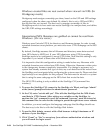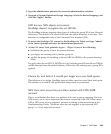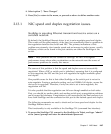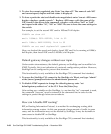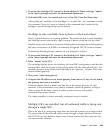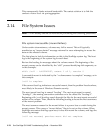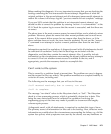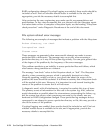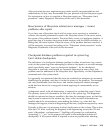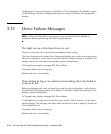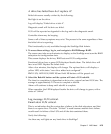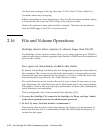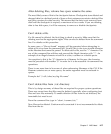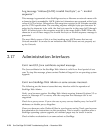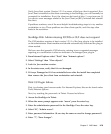
2-72 Sun StorEdge 5310 NAS Troubleshooting Guide • December 2004
RAID configuration changed. If syslogd logging was enabled, these results should be
included as well. Find out whether remote access is available to the site, and if
appropriate, provide the necessary details to accomplish this.
After reviewing the case, engineering may make specific recommendations and
modifications, or they may recommend that you proceed with the filesystem repair.
For instructions on how to complete a filesystem repair, see the heading “Filesystem
check procedure” under Diagnostic Procedures at the end of this document.
File system related error messages
The following are examples of messages that indicate a problem with the filesystem:
Broken directory, run check
Corrupted/run check
Cleaner error
These messages are generated when unsuccessful attempts are made to access
particular files or directories. The message may occur only when accessing a
particular directory; or it may fill the system log entirely. You can get a general idea
of the degree of the problem by the frequency of the error messages.
This problem manifests as an inability to access particular files and folders, which
often causes a hang condition or a timeout.
The message “run check” refers to the filesystem check, or “fsck”. The filesystem
check is a time consuming process, which is potentially destructive to data.
Generally speaking, unless you have a very good idea about the source of the
problem, the issue should be escalated. It is almost a certainty that a filesystem check
will be needed in this case. However, it is important to work toward locating the
source of the problem to ensure that it will not recur.
A diagnostic email, with all attachments, is required to escalate this type of issue.
The primary source of information for this case is the system log. Also, collect as
much information as possible about the circumstances surrounding the failure, e.g.
did the system lose power, what symptoms were seen by the clients, was any
hardware or RAID configuration changed. These particular log messages always
correspond to an attempt to access a particular directory or file, this may provide a
clue to the source of the problem.
If syslogd logging was enabled, these results should be included as well. Find out
whether remote access is available to the site, and if appropriate, provide the
necessary details to accomplish this.



